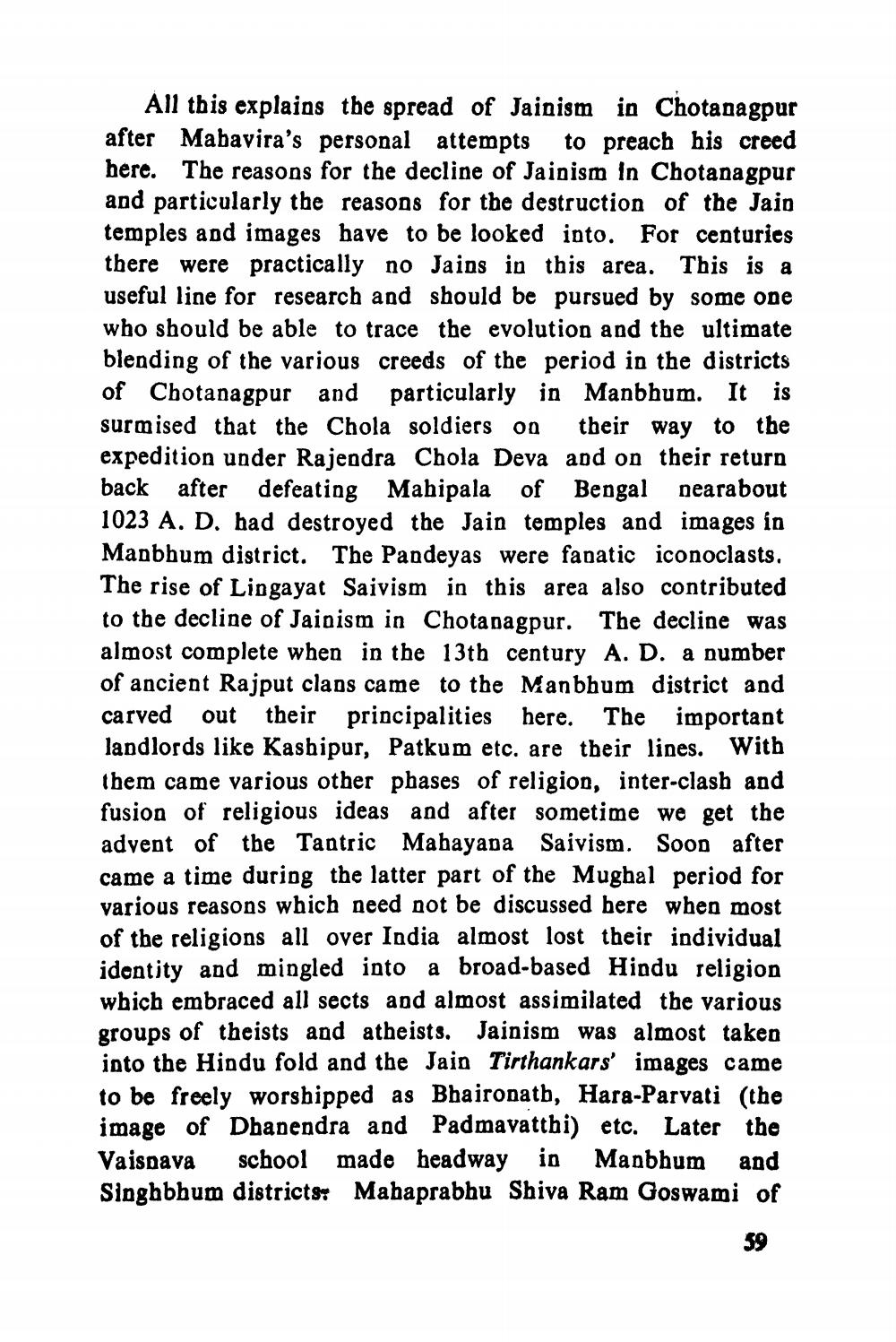________________
All this explains the spread of Jainism in Chotanagpur after Mabavira's personal attempts to preach his creed here. The reasons for the decline of Jainism in Chotanagpur and particularly the reasons for the destruction of the Jain temples and images have to be looked into. For centuries there were practically no Jains in this area. This is a useful line for research and should be pursued by some one who should be able to trace the evolution and the ultimate blending of the various creeds of the period in the districts of Chotanagpur and particularly in Manbhum. It is surmised that the Chola soldiers on their way to the expedition under Rajendra Chola Deva and on their return back after defeating Mahipala of Bengal nearabout 1023 A. D. had destroyed the Jain temples and images in Manbhum district. The Pandeyas were fanatic iconoclasts. The rise of Lingayat Saivism in this area also contributed to the decline of Jainism in Chota pagpur. The decline was almost complete when in the 13th century A. D. a number of ancient Rajput clans came to the Manbhum district and carved out their principalities here. The important landlords like Kashipur, Patkum etc. are their lines. With them came various other phases of religion, inter-clash and fusion of religious ideas and after sometime we get the advent of the Tantric Mahayana Saivism. Soon after came a time during the latter part of the Mughal period for various reasons which need not be discussed here when most of the religions all over India almost lost their individual identity and mingled into a broad-based Hindu religion which embraced all sects and almost assimilated the various groups of theists and atheists. Jainism was almost taken into the Hindu fold and the Jain Tirthankars' images came to be freely worshipped as Bhaironath, Hara-Parvati (the image of Dhanendra and Padmavatthi) etc. Later the Vaisnava school made headway in Manbhum and Singhbhum districts: Mahaprabhu Shiva Ram Goswami of




